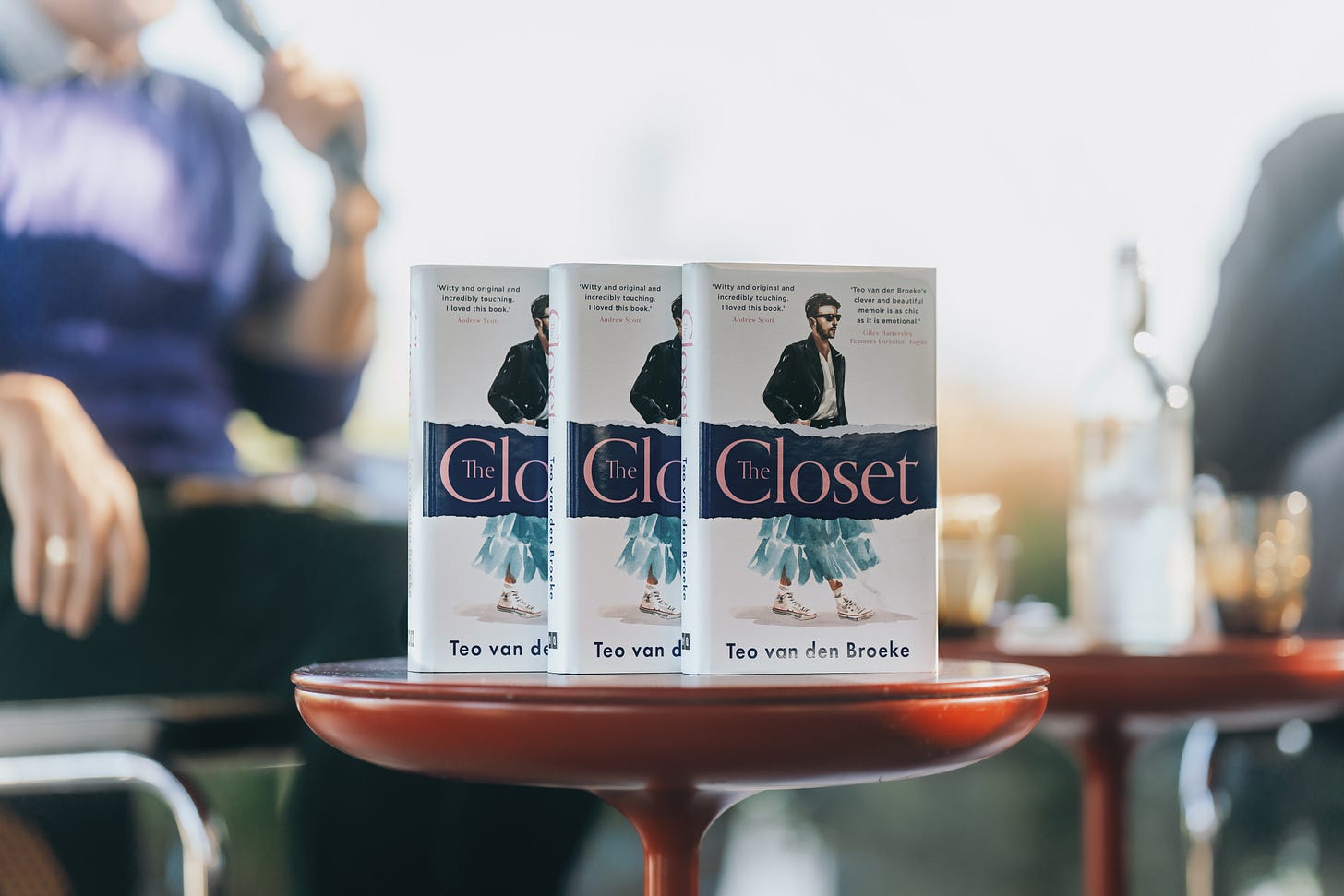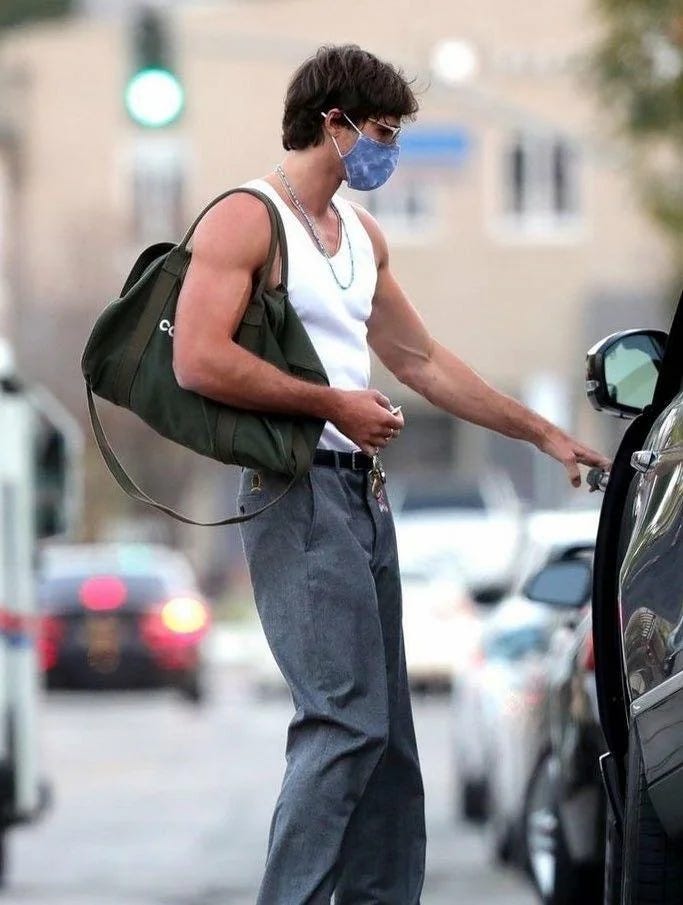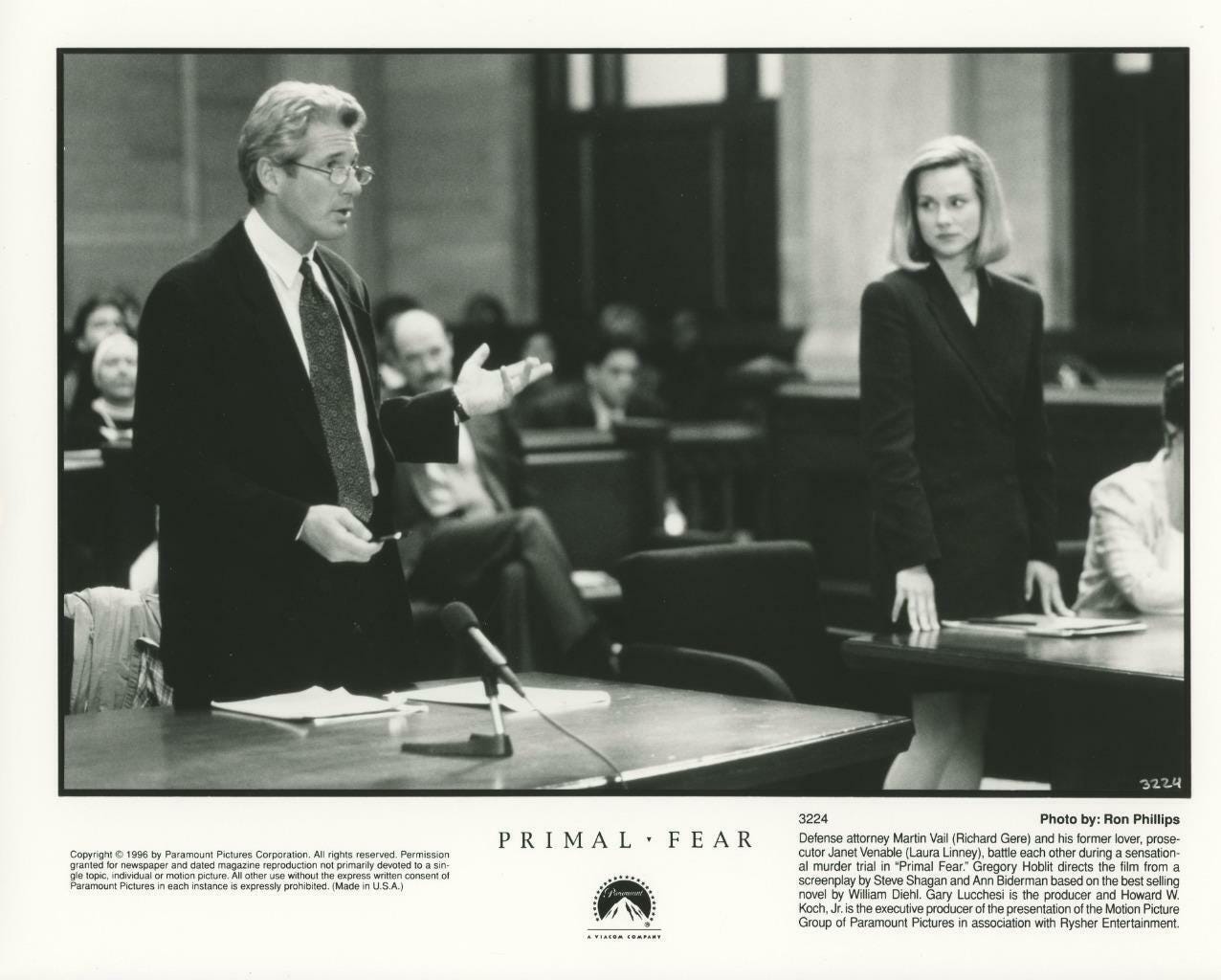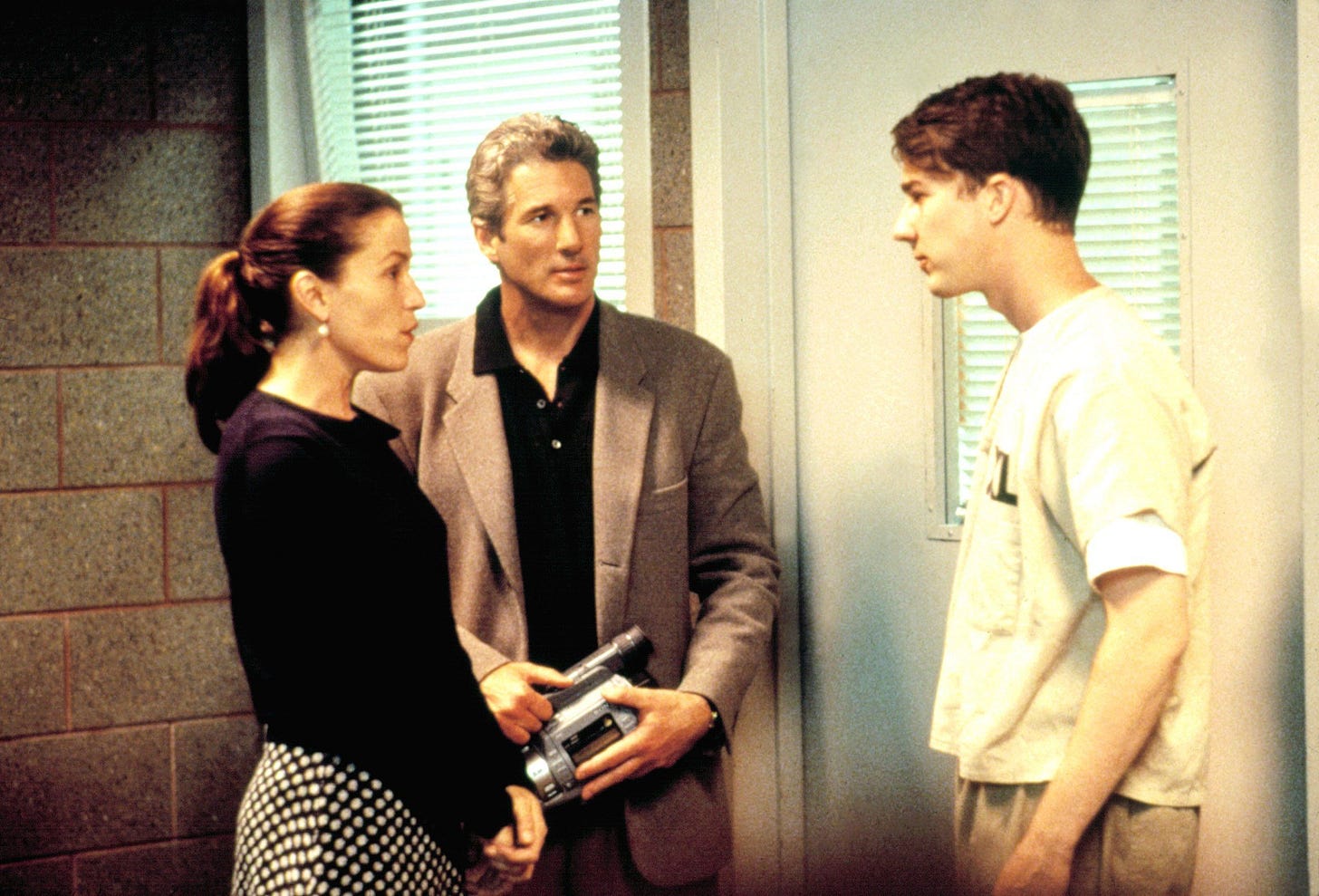Clothes that heal, the hunt for a perfect bag, square sunnies: a death, and the chicest film you’ve never heard of
In my final post before my two week summer break, I share a few of the most pressing sartorial thoughts which have been bothering my brain this week
I’m off to Sicily next week. It’s allegedly going to be 43ºC for a good chunk of the trip, which means that I’ll be naked the majority of the time. This also makes it the perfect moment to take a break from writing about clothes for The Closet until my next post on Wednesday 21st August.
Before that, though, a few style-related musings that have trotted down the runway of my brain in recent days.
1 | Clothes Which Heal
I recently met with the editor of my book, The Closet, which was published in hardback last September. In the meeting, among other things, we discussed our plans for the paperback version of the book, which will be released next summer. In addition to rethinking the entire package - cover et al - I’m also writing a whole new chapter: a kind of never-before-read epilogue to close out the story once and for all (or at least until I next experience the book-writing itch).
For those who haven’t yet read The Closet, it’s a memoir told through the prism of clothes. Each chapter is centred around a garment from the wardrobe of my past - from the blue princess dress I wanted to wear as a child, to the Gucci loafers I bought to impress the boy I loved - and it’s as much a story about coming out, as it is harnessing the power of clothes to build confidence and identity.
As I thought about what to write for the epilogue, my mind tracked back to the period at the beginning of the pandemic when I put down the first words of the book. I was drinking a lot, I was unhappy in my relationship and I was buying a lot of expensive clothes I didn’t need, to make myself feel better about a life I no longer felt all that excited about living. I’d also begun reading The Velvet Rage, Alan Downs’ seminal book about the experience of growing up gay in a straight man’s world.
Lounging on a deck chair in the garden of my mother’s house, where I decamped for the duration of lockdown, swigging on an extra strong gin and tonic - sun-addled and booze-rouged - my sozzled eyes scanned the following passage:
“The damaging part of learning to live your life in two parts, whether in reality or fantasy, cannot be underestimated. It is an infectious skill that you learned, one that would eventually spread beyond the bedroom of your life.” Wrote Downs. “Life wasn't ever what it seemed on the surface. Nothing could be trusted for what it appeared to be. After all, you weren't what you appeared to be. In learning to hide part of yourself, you lost the ability to trust anything or anyone fully. Without knowing it, you traded humane innocence for dry cynicism.”
The final gulp of g&t turned sour in my throat, the rays seemed to singe deeper into my forehead and my chair suddenly felt unsteady on the bronzed grass of my mum’s lawn. My way of life had been summed up in 96 little words on the page in front of me, and I worried I might be sick. I suddenly realised that I had no idea who I was and that, in turn, I had been hiding behind the scaffolding of substances I’d spent years building around myself - pillars of salt designed to keep danger away, when in fact they were keeping me stuck in a prison of my own fear.
It wasn’t long after that moment that I stopped drinking. I simultaneously eradicated drugs from my life and I finished the book. It was a strange feeling because as I embarked on my final reads - clear headed and naked to the truth of things - I also realised that in some ways, the clothes I had pegged the narrative around, had transformed from something innocent and joyful (the princess dress, for instance), into a barrier against the world - as much a vehicle for self expression within it as a forcefield of protection from it.
During my decade working in men’s magazines (the beginning of which is charted in the final chapter of The Closet) I grew to believe that the expensive clothes I was lavished with were a firm expression of my fragile identity - one of the aforementioned pillars of salt erected in response to a world where I’d grown used to feeling othered due to my sexuality.
In some ways, my clothes had become fabric manifestations of the “dry cynicism” which Downs had so plainly defined in his book; the furry Gucci loafers of chapter 13 used to stomp on the judgement of fellow editors at fashion shows, the tailored blue suits of chapter 12 allowing me to hide in plain sight among the invariably straight male colleagues with whom I shared office space.
In my past three sober years I’ve also tried to wean myself off my addiction to buying and wearing overpriced garments, clothes which made me feel safe, somehow, but ultimately didn’t live up to their promise - choosing instead to wear garments which make me feel good. Some of those cost a bit of money, most didn’t.
That doesn’t mean that I don’t still love fashion. I’m obsessed with it. But now my process of buying clothes is more about personal connection than it is the way in which they make the world perceive and understand me.
My newly discovered joy of fabric is a prime example, meaning that the label adorning a garment or accessory comes a firm second to the way it feels against my body. I care about how clothes make me look, of course, but that’s as much about celebrating beautiful cut and craft, as it is about presenting myself to the world in an acceptable way.
Sitting in HarperCollins’ HQ with my editor last week I quickly came to the conclusion that my epilogue would need to centre on the new relationship I’ve built with clothes since that sad, sunny afternoon in 2020. Because in that time I’ve come to learn that even without the added layer of expensive gear, I am enough.
If I sound therapised, that’s because I am. The process helped me to learn the power of clothes to heal, because wearing something you love - and, most importantly, which brings you joy (hello blue princess dress!) - can make even the most challenging moments in life seem that much more surmountable.
2 | The Hunt for a Perfect Bag
I’ve always been jealous of the fact that most women seem able to justify spending the amount of a house deposit on a new designer handbag, simply because it’s something they “need”.
It’s almost as if to not own a Chanel 2.55 or a Louis Vuitton Neverfull would leave them as exposed as the day they were born and, in turn, in abject danger of being rejected by society - like the runt of a fox litter left to fend for itself, bagless, on Brixton Road.
Whenever I think about buying myself a bag, on the other hand, I’m left feeling a fathomless guilt. It shouldn’t be surprising, I suppose, the concept of men's accessorising has been maligned ever since Beau Brummell ruined it for us all by overdoing it on the canes, spats, hats and natty cravats back in the 1800s.
Things changed a bit in the noughties with the rise of the man bag - those awful flappy leather messengers made by Mulberry, being the most notable - and the handbag carrying likes of A$AP Rocky and Jacob Elordi have helped more recently; yet still, bags remain low on the pecking order when it comes to the accessories which men want to buy and, in turn, which brands want to design.
The thing is, we all have stuff. Every morning I carry an enormous laptop, an equally massive charger, my keys, a phone, my wallet, an apple (Pink Lady), a Boost bar for elevenses and invariably some kind of roomy outer layer, to combat our evil office air conditioning, into work with me.
I couldn’t manage it all without some kind of roomy receptacle and I’m not interested in carrying a canvas tote or a babyish backpack, so I need a proper, beautiful shopper-style bag - ideally with a zip, for privacy - which I feel proud to carry and want to keep forever.

Recently, I’ve been attempting to swallow the guilt and have been simultaneously searching for something which truly fits the bill. The closest I’ve come is one I found at Bottega Veneta (above), which is far too expensive to justify (though around a fifth of the cost of a 2.55). I’ve included the other contenders, in ascending price order, below.



As much as I relish any opportunity to share my shopping lists with you, dear reader, the prime purpose of this section of the newsletter is to dispel the myth that men don’t care about the bags they carry. In my experience, they do. A good bag, after all, is just as much of a life essential as a good wallet - a step above a belt or hat in terms of importance, and a step below your shoes.
But most pressingly, should you spot any stray foxes whilst you’re out carrying it, you can pop them inside for safe keeping.
3 | The Chicest Film You’ve Never Heard Of
Last week, on an average Tuesday night with not much going on, my boyfriend and I struggled to find something to watch. We’d been to see the BRILLIANT Long Legs at the cinema the night before (book your ticket now, Nicholas Cage is “it rubs the lotion on the skin” levels of creepy), and we were in the mood to continue our crime thriller winning streak.
Eventually, after consulting multiple lists of the best films in the genre, we alighted on Primal Fear, a schlocky, vaguely misogynistic, massively cheesy courtroom thriller starring Richard Gere, a radiant Laura Linney and a quite good debut Edward Norton as a stuttering psychopath.
I couldn’t really tell you what happened in the film because I was so utterly distracted by its wardrobe. Designed exclusively by Giorgio Armani and styled by Betsy Cox, the suits worn by Gere are cut with the brand’s classic nineties silhouette - drapey, syrupy, beautifully light-absorbing and finished with roomy legs and Armani’s classic high gorge lapels.
I’d go so far as to say that Gere looks even better in Primal Fear than he does in American Gigolo, the more famous film that Armani first dressed him for in 1980.
Scene after scene he’s in one Armani look or another, from the broken greige and grey suit plus little knitted polo with popped collar he wears to interview his client alongside a young Frances McDormand; to the beautifully capacious midnight blue two piece he wears in court and the dove grey single breasted he slides around in, on rare visits to harass his long suffering secretaries at the office. Suffice to say, there isn’t a single dud look to be seen.
Laura Linney also shines resplendent in her immaculately cut skirt suits, finished with a futuristically sharp-shouldered silhouette. I’m not sure whether they were designed by Armani too, but they certainly look like it.
I was so taken with the film’s wardrobe that I promptly popped onto Vinted and purchased myself an immaculate black fluid wool Armani runway blazer for just £10. It’s one of the most beautiful jackets I own, believe it or not, and I feel like Gere killing it in court every time I wear it.
Here are a few more vintage Giorgio bargains I may or may not treat myself to in the coming weeks - unless, of course, you beat me to it. MY primal fear!



4 | It’s Suddenly a Round Sunglasses Summer
The Ray Ban crisis management team must have been crying into their spec cases earlier this week when accused sex offender Huw Edwards wore a pair of smoke grey Wayfarers to appear in court.
The good news is that there are a whole host of great round sunglasses shapes to pick from this summer - including from Ray Ban, which is good, as they happen to be my faves.
Here are a few of the best…


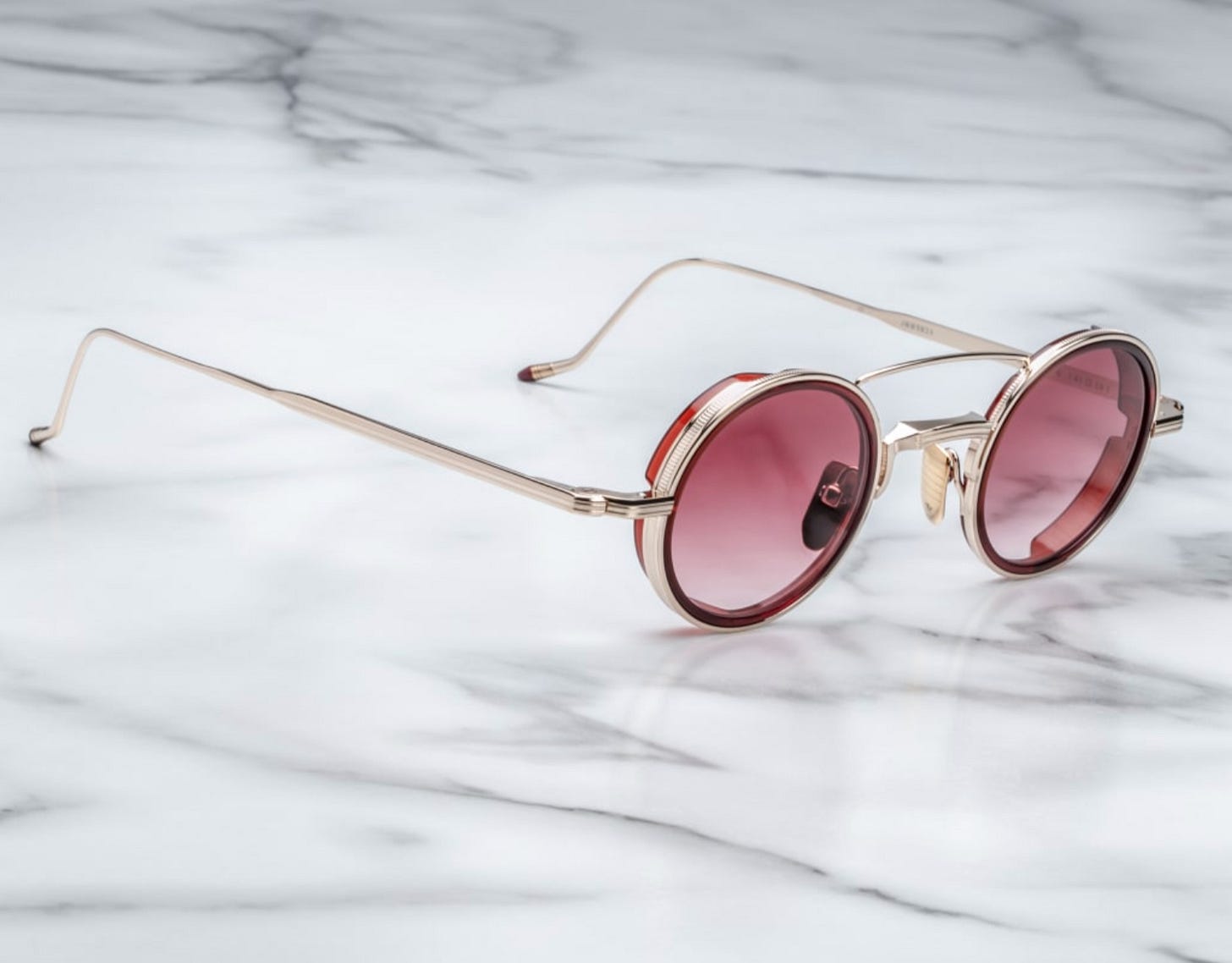
If you’re enjoying The Closet please consider upgrading to a paid subscription. It’s the cost of a coffee once a month and it will help me to continue producing this newsletter each and every week.






